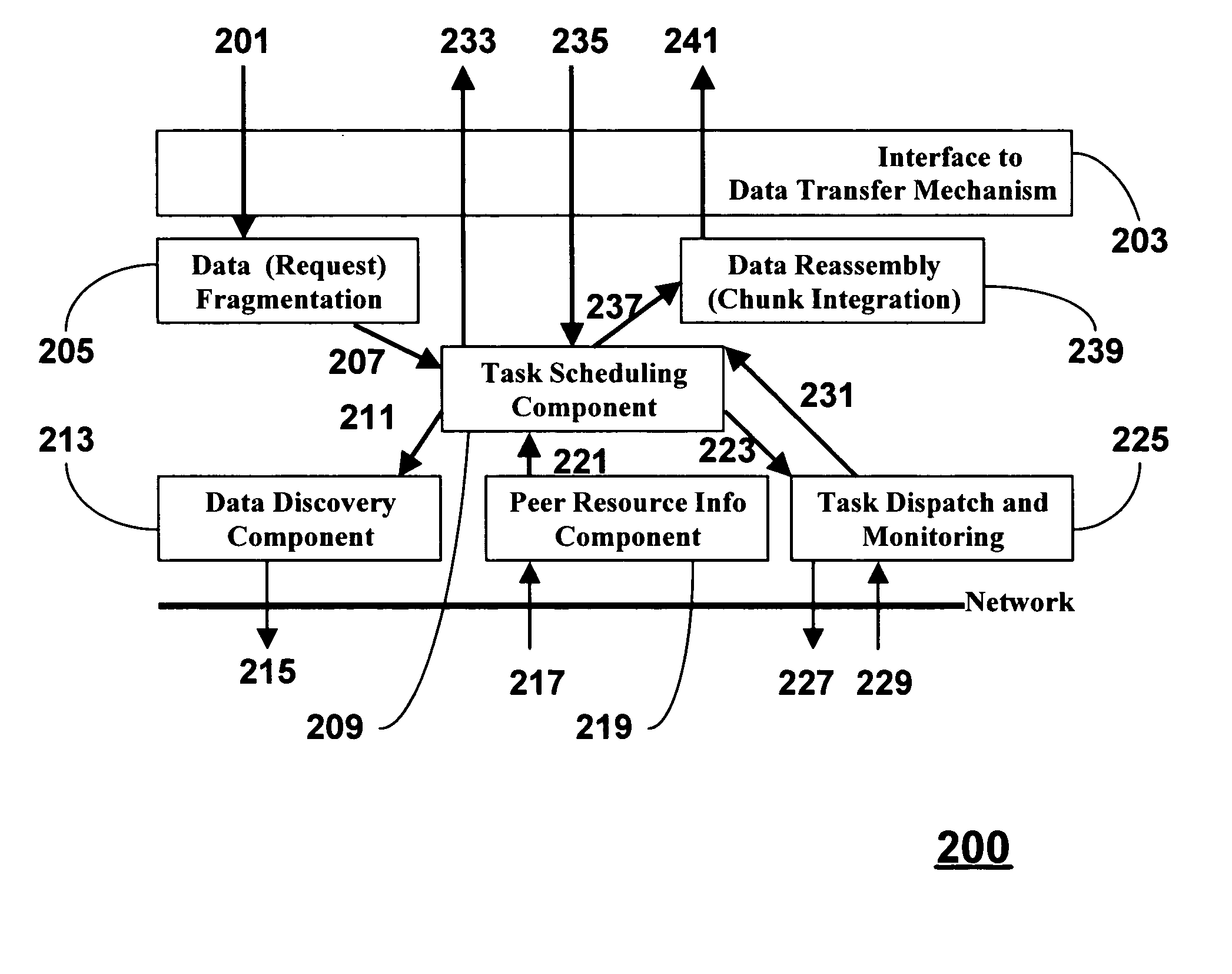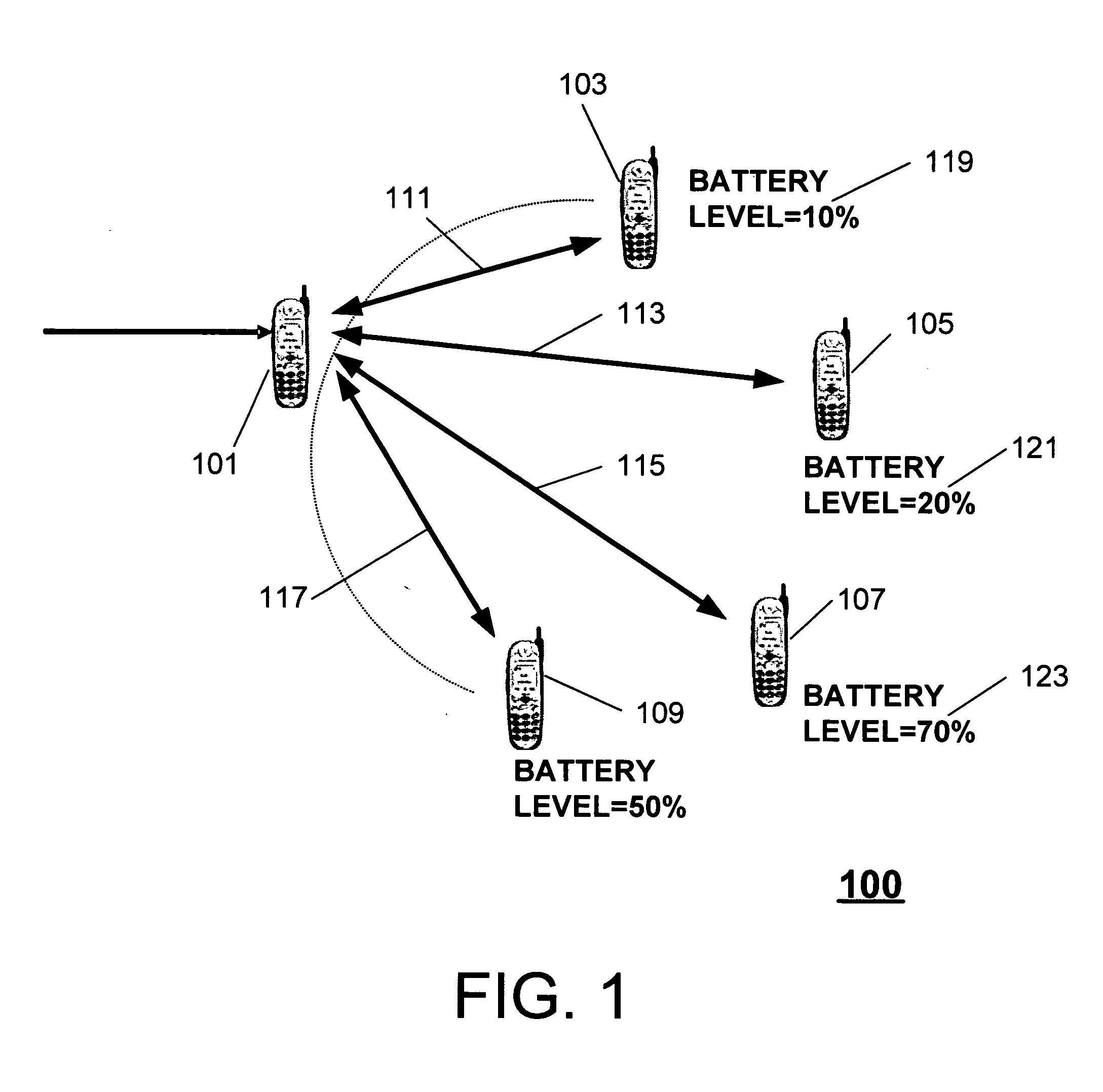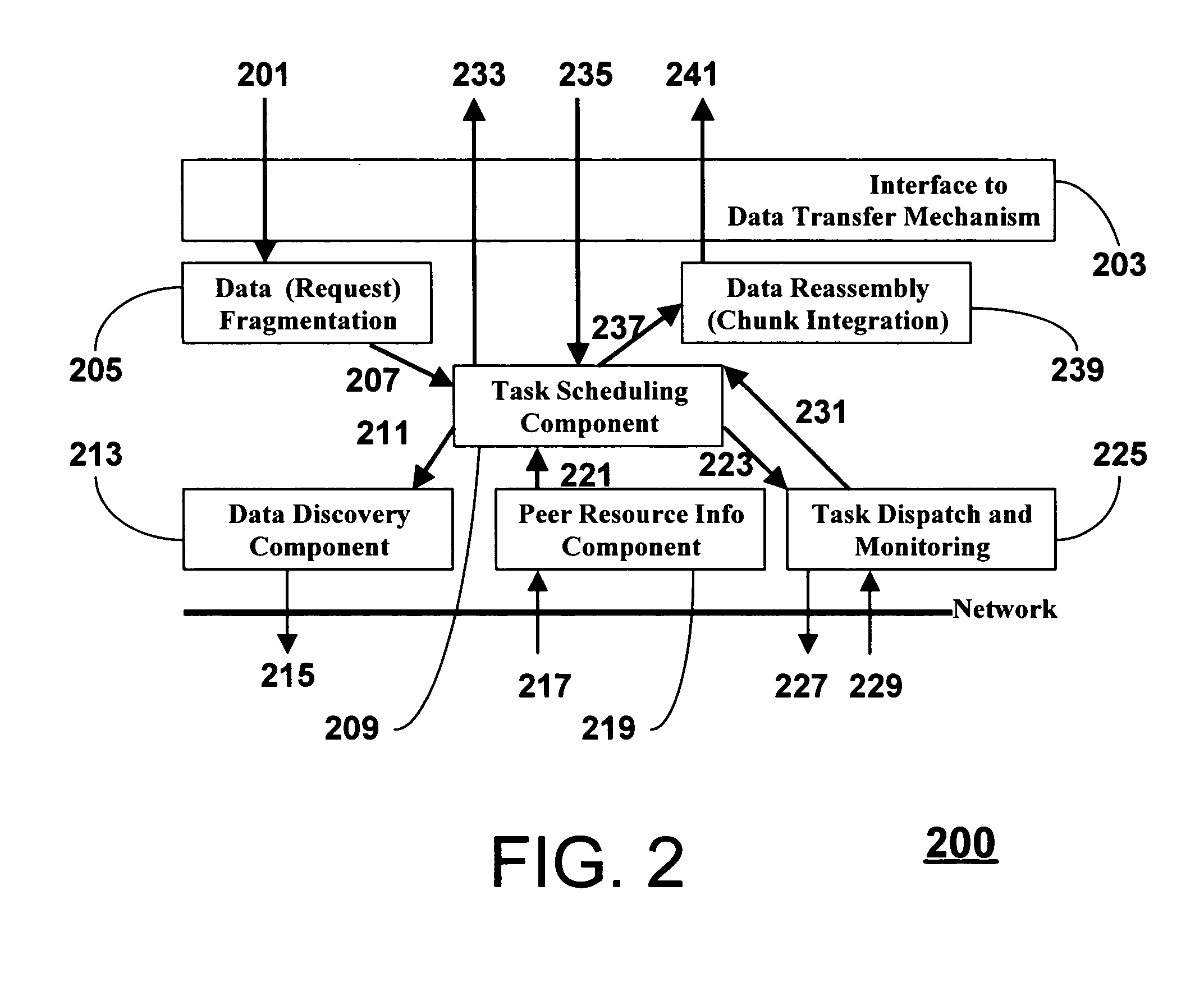Device and method for transferring apportioned data in a mobile ad hoc network
a mobile ad hoc network and data transfer technology, applied in the field of mobile ad hoc networks, can solve the problems of limited “window of opportunity”, content downloads can consume time and energy, and do not address new challenges
- Summary
- Abstract
- Description
- Claims
- Application Information
AI Technical Summary
Benefits of technology
Problems solved by technology
Method used
Image
Examples
Embodiment Construction
[0010] The present invention uses an integration-of-concurrent-transfers approach wherein multiple transfers are initiated concurrently, i.e., each to a different peer for a different module / data portion of the required data, with the transferred components subsequently integrated to restore the required content on the requesting device. Also, the effective load and energy requirements on individual peer sources of the content are reduced, allowing resource-poor peers to participate in the data transfer process and effectively increasing the number of peers that can act as data sources. The present invention provides an incremental transfer mechanism where a mobile device can take advantage of opportunities to receive portions of content from each peer-to-peer encounter, and gradually assemble the complete content. This approach is effective, despite the inherent instability of wireless network connections, due to the frequency of peer-to-peer encounters of prevalent mobile devices....
PUM
 Login to View More
Login to View More Abstract
Description
Claims
Application Information
 Login to View More
Login to View More - R&D
- Intellectual Property
- Life Sciences
- Materials
- Tech Scout
- Unparalleled Data Quality
- Higher Quality Content
- 60% Fewer Hallucinations
Browse by: Latest US Patents, China's latest patents, Technical Efficacy Thesaurus, Application Domain, Technology Topic, Popular Technical Reports.
© 2025 PatSnap. All rights reserved.Legal|Privacy policy|Modern Slavery Act Transparency Statement|Sitemap|About US| Contact US: help@patsnap.com



